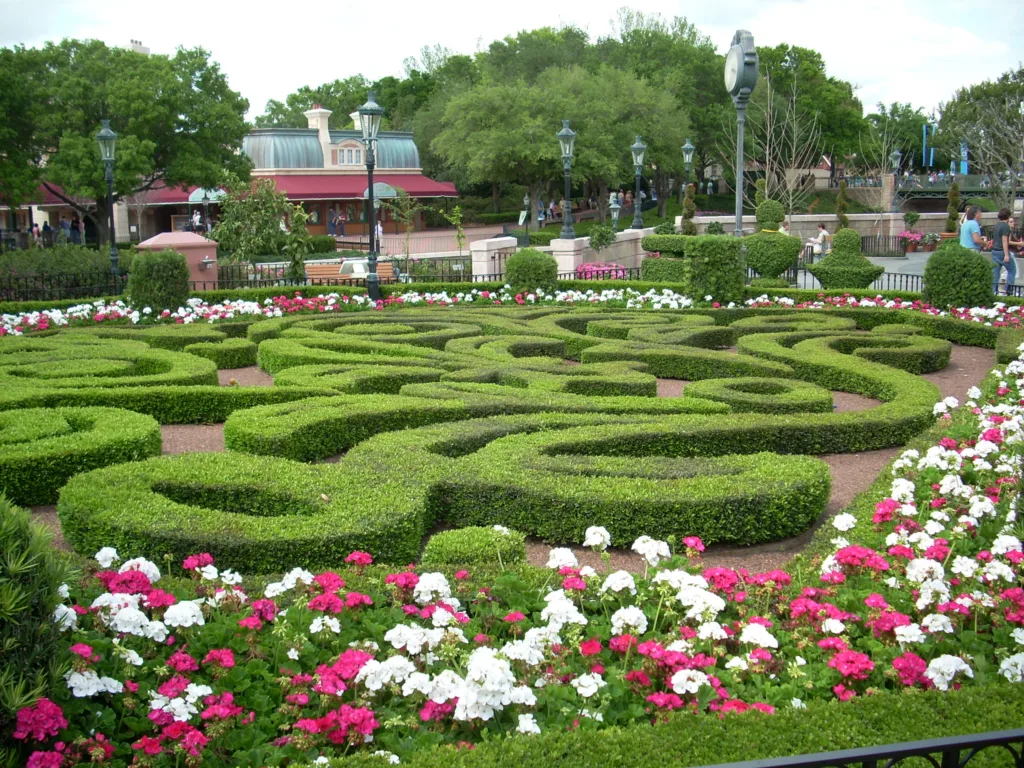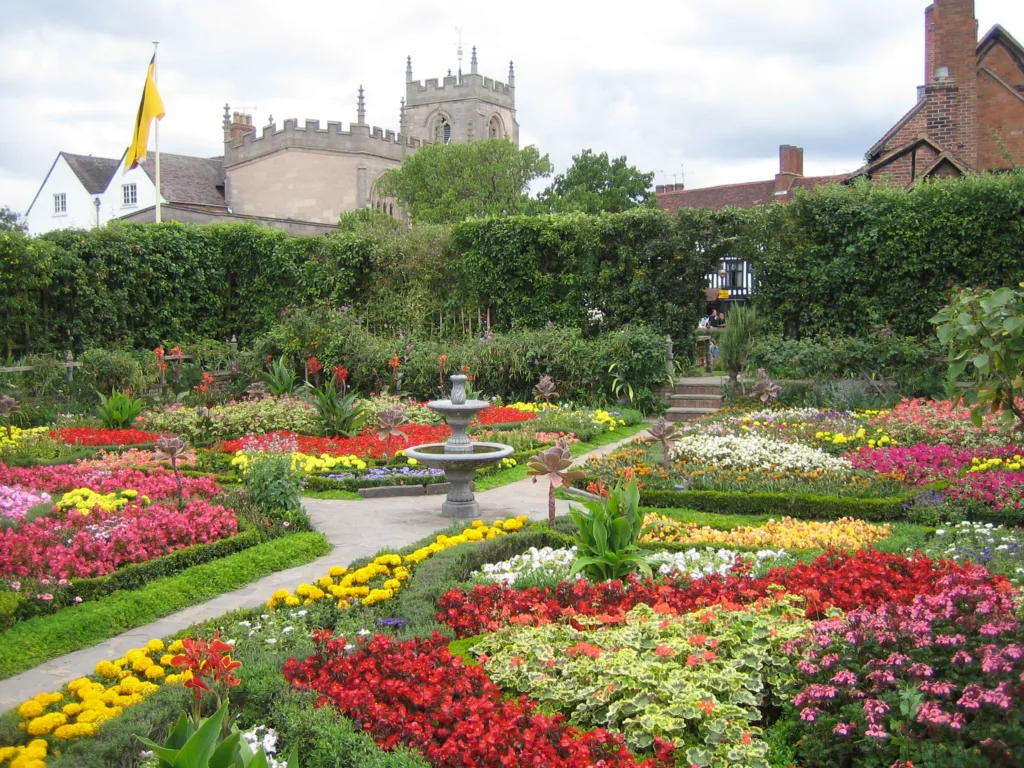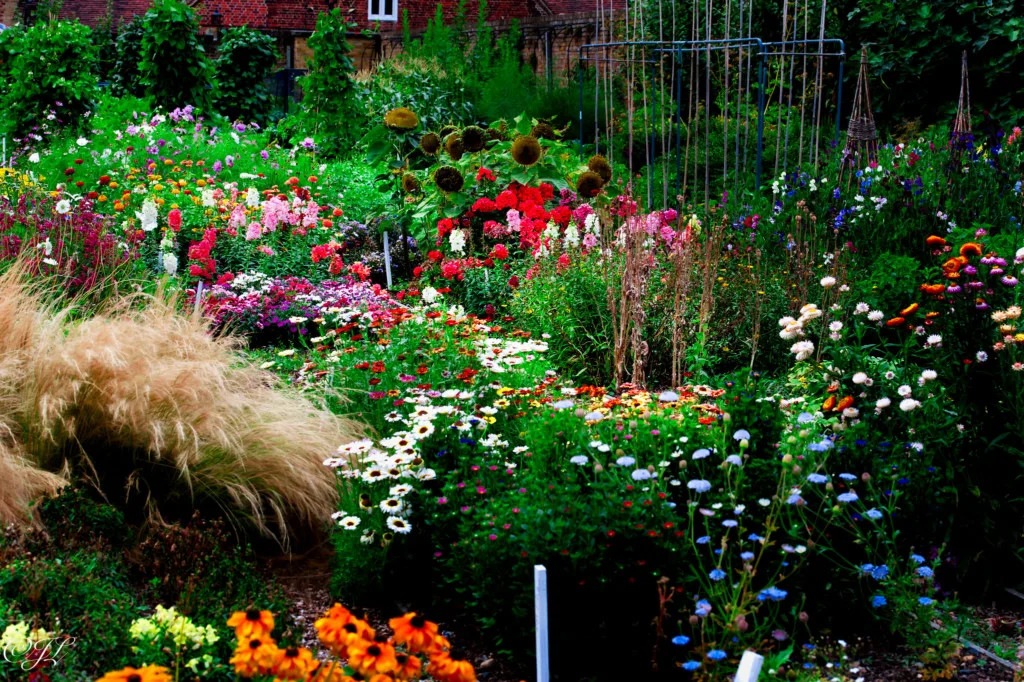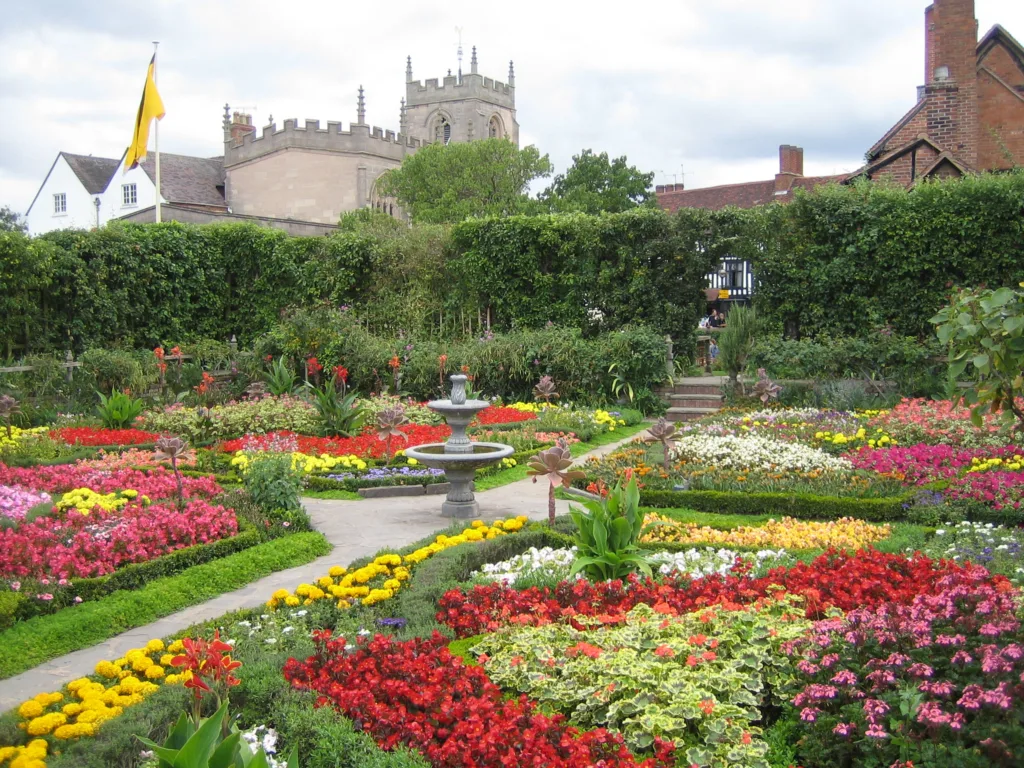English gardens are renowned worldwide for their timeless, charm, and romantic appeal. Stepping into an English garden is like entering a whimsical paradise where nature reigns supreme, and every plant, flower, and pathway is meticulously designed to create a harmonious and captivating experience.
In this blog post, we will explore the magic of English gardens, their distinctive features, and why they continue to captivate gardeners and nature enthusiasts alike.

A Journey Back in Time
English gardens trace their roots back to the 18th century, during the Georgian era. Influenced by the classical gardens of France and Italy, these gardens were designed as a reflection of Romanticism, a movement that emphasized the beauty of nature and the connection between man and the natural world.
Key Features of English Gardens
Lush Greenery and Tranquil Spaces
One of the most striking features of an English garden is the abundance of greenery. The landscape is adorned with sprawling lawns, carefully pruned hedges, and towering trees, creating a soothing and serene atmosphere.
These gardens often feature separate “rooms” or sections, each with its unique character and purpose. These secluded spots offer a quiet respite for meditation, reading, or simply enjoying nature’s beauty.
Colorful Flower Borders
No English garden is complete without its vibrant flower borders. These borders burst with a riot of colors, showcasing a wide range of flowers, including roses, peonies, delphiniums, and foxgloves.
Flowers are carefully selected and arranged to create a sense of enchantment and harmony. They are often planted in a mixture of perennials and annuals, ensuring a continuous display of blooms throughout the seasons.
Meandering Pathways and Water Features
English gardens are known for their meandering pathways that lead visitors on a delightful journey through the landscape.
These pathways are often lined with enchanting archways, covered in climbing roses or fragrant jasmine. Water features such as ponds, fountains, or gentle streams are also common, adding a touch of tranquility and providing a soothing soundtrack of babbling water.

Architectural Elements and Eye-catching Features
To add visual interest and architectural flair, English gardens incorporate various elements such as gazebos, arbors, pergolas, and ornamental structures.
These structures serve as focal points and provide shaded areas for relaxation. Additionally, garden walls, trellises, and statues contribute to the overall aesthetics, creating a seamless blend of nature and artistry.
Informality and Naturalistic Design
Unlike some formal gardens with strict symmetrical layouts, English gardens embrace an informal, naturalistic design.
The goal is to mimic the organic flow of nature, with gentle curves and unexpected twists. The landscape is carefully crafted to appear effortless and unplanned as if nature herself had shaped it over time. This creates a sense of harmony and whimsy that is characteristic of English gardens.
A Haven for Wildlife
English gardens are havens for wildlife, providing a sheltered habitat for a variety of creatures. From birds and butterflies to squirrels and hedgehogs, these gardens offer food, water, and refuge for a diverse array of species.
Nest boxes, bird baths, and carefully selected plants that attract pollinators are often incorporated to encourage biodiversity and promote a healthy ecosystem.
Maintaining an English Garden
Maintaining an English garden requires dedication, time, and a keen eye for detail. Here are a few tips to help you care for your English garden:
- Regularly prune hedges and shrubs to maintain their shape and promote healthy growth.
- Deadhead flowers to encourage continuous blooming and prevent seed formation.
- Keep pathways clear of debris and invest in stepping stones or gravel to prevent soil compaction.
- Mulch flower beds retain moisture, suppress weeds, and provide nutrients to the soil.
- Regularly water your plants, especially during dry spells, and consider installing a water feature to provide a source of hydration for wildlife.
Exploring Famous English Gardens
If you’re enchanted by the idea of an English garden, why not embark on a journey to visit some of the most famous examples? Here are a few renowned English gardens worth exploring:
1. Kew Gardens\, London
As one of the world’s largest and most diverse botanical gardens, Kew Gardens in London is a true horticultural masterpiece.
Showcasing over 50,000 species of plants, its magnificent landscapes and iconic glasshouses offer a captivating experience for visitors of all ages.
2. Sissinghurst Castle Garden\, Kent
Sissinghurst Castle Garden in Kent is famous for its romantic design and is considered one of the most influential English gardens of the 20th century.
Created by Vita Sackville-West and Harold Nicolson, the garden features stunning flower borders, a tranquil white garden, and breathtaking views from the tower.
3. Hidcote Manor Garden\, Gloucestershire
Hidcote Manor Garden in Gloucestershire is a true gem of the English garden tradition. Created by American horticulturist Major Lawrence Johnston, it is renowned for its series of garden “rooms” and stunning plant combinations that create an atmosphere of mystery and discovery.
4. Blenheim Palace Gardens\, Oxfordshire
Surrounding the stately Blenheim Palace in Oxfordshire, these gardens offer a diverse range of landscapes and styles.
From the formal Water Terraces to the romantic Rose Garden and the serene lake, these gardens provide a visual feast for visitors.
Visiting these gardens can provide inspiration and ideas for creating your own unique English garden design.

The Timeless Beauty of English Gardens
English gardens exude a timeless beauty that continues to captivate people around the world. With their lush greenery, enchanting flower borders, and meandering pathways, these gardens offer a sanctuary where one can escape the chaos of modern life and find solace in nature’s embrace.
Whether you’re a seasoned green thumb or a novice gardener, creating your very own English garden can be a rewarding and fulfilling experience. So why not unlock the magic and create your slice of paradise in your backyard?
Final thought
In conclusion, English gardens are not merely collections of plants and flowers, but carefully curated landscapes that tell a story.
They transport us to a bygone era, where nature was revered and beauty was found in the simple pleasures of a blooming rose or a rustling tree.
So, whether you choose to visit a famous English garden or embark on the journey of creating your own, immerse yourself in the charm and tranquility of these enchanting spaces. Let the magic of an English garden whisk you away on a journey of beauty and serenity.
People Also ask
Why is it called an English garden?
The term “English garden” is used because this style of garden design originated and gained prominence in England during the 18th century. It reflects the aesthetics and philosophies embraced by English landscape designers and gardeners.
What is the most famous English garden?
One of the most famous English gardens is the “Kew Gardens” (Royal Botanic Gardens, Kew) located in London.
It is renowned for its extensive plant collections, historic glasshouses, and landscapes designed to showcase a diverse array of plant species.
What is the purpose of the English garden?
The purpose of an English garden is to create a harmonious and inviting landscape that mirrors the natural beauty of the English countryside.
It provides spaces for leisure, contemplation, and appreciation of nature, encouraging a connection with the outdoors.
What is special about an English garden?
What makes an English garden special is its naturalistic and evolving aesthetic. The informal layout, diverse plantings, and incorporation of architectural elements create a timeless and picturesque atmosphere.
English gardens stand out for their ability to blend with the surrounding environment, offering tranquil and inviting spaces for relaxation and enjoyment.

